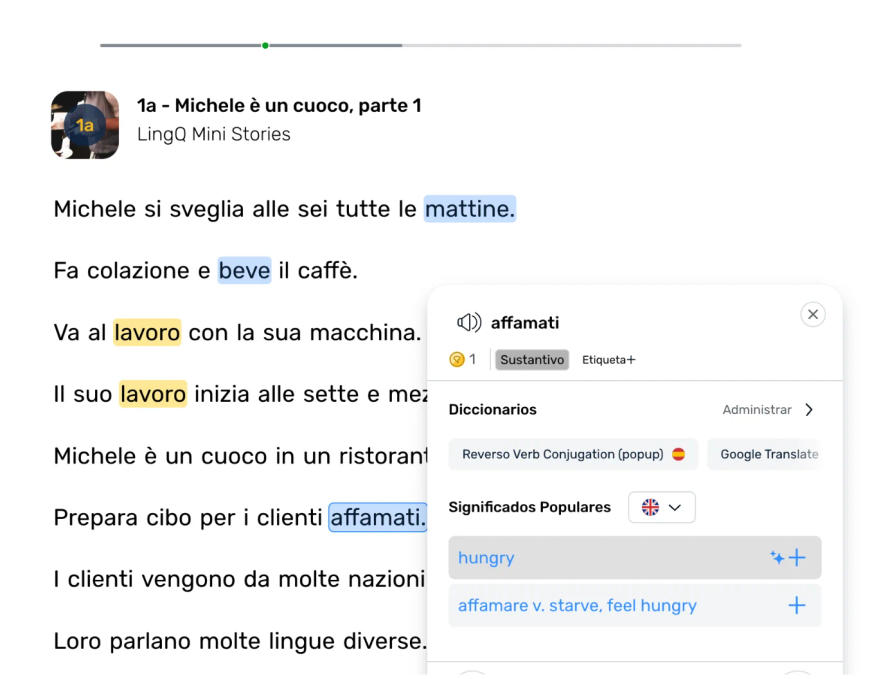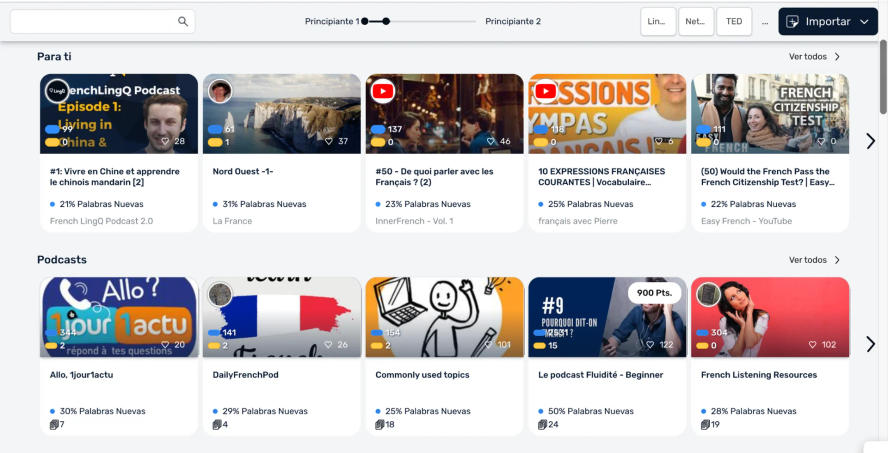You’ve decided to start learning a new language. While exciting, getting started can feel a bit daunting. What’s the right approach? How do you know what tools work for you? In this post, we’ll equip you with the ideal mindset and strategies needed to start learning your target language the right way.
The Importance of Starting Well
To understand why a strong start when learning a language matters, two proverbs immediately come to mind.
“Well Begun Is Half Done”
This quote from Aristotle suggests that getting started is no small feat. This ancient wisdom reminds us that starting a task effectively lays the foundation for success. Our initial approach plays an important role in setting our mindset, pacing, and consistency.
“A Journey of a Thousand Miles Begins with a Single Step”
Laozi’s words highlight that, even when the process is long, the first step is critical. This principle applies perfectly to language learning. Language learning is a marathon, not a sprint. Once you get started, success in learning a language is seizing and sustaining your momentum.
How to Start Learning a Language the Right Way
Choose the Right Content
Choosing the right content is essential when starting to learn a language. Many learners assume that the most basic vocabulary is the best place to start: colours, family members, or train station phrases. However, this isn’t the most interesting (or useful) content to develop a feel for a language.
Focus on material with high-frequency vocabulary and repetition. Resources like LingQ Mini Stories, for example, are ideal for beginners—these texts introduce you to core vocabulary and grammar naturally and repeatedly. You’re not memorizing lists of vocabulary without context. Instead, you’re reading through texts rich in high-frequency vocabulary and repetitions of useful sentence structures.
Skip the Grammar Overload (Especially in the Beginning)
Don’t dive into conjugation tables or declension rules right away. While an occasional overview of basic grammar can be helpful, it’s not necessary to memorize rules upfront. Language learning isn’t about perfecting grammar from the start; it’s about building a sense of the language through exposure.
As you start to notice patterns in the language, it’s obviously okay to indulge in your curiosity and seek direct explanation. However, the goal is to start learning your language by consistent exposure and simply noticing things about your language along the way.
Avoid Artificial Conversations
Prioritize content that interests you. Many phrases that appear in traditional language courses are often irrelevant in real-life conversations. For example, “How old are you?” may seem like a necessary phrase to pick up in the beginning of your language-learning, but how often do you discuss your age with others? These structures can be easily picked up later as you progress and when you actually need them. Instead, focus on meaningful input—listening and reading content that engages you.
Key Principles When Starting a Language
Immersion
Do not underestimate the value of consistent exposure to the language. Jump in with beginner-friendly materials and maximize the amount of time you spend interacting with the language. Start listening, reading, and looking up words that catch your attention. If you’re engaging with the target language and enjoying the process, you’re on the right track.
Repetition
You’ll need to come across the same high-frequency vocabulary and structures several times. To truly learn the language and develop a sense of intuition, repetition matters. Beginner textbooks often lack the repetition needed to internalize vocabulary. Traditional lessons jump from one topic to another, introducing new words without revisiting previous ones.
High-quality beginner content, like LingQ Mini Stories, provides the consistent repetition necessary for true learning. You want to find understandable, compelling input that you can read (and re-read) to soak up the language effectively.
Build Momentum
Once you take that first step, everything else will start to fall into place. Just as physical exercise becomes enjoyable once you get moving, language learning becomes engaging as you immerse yourself. Soon, through consistent exposure, you’ll develop a sense of the language. As you familiarize yourself with the language through reading and listening, grammar explanations and other details become easier to understand.
In summary…
-
- Don’t worry about mastering grammar when you start learning a language.
-
- Focus on consistent exposure to the language through reading and listening.
-
- Use content that emphasizes repetition and high-frequency vocabulary.
-
- Avoid boring or irrelevant material—engage with content that feels like “real language.”
-
- Starting well doesn’t mean starting perfectly. Build habits that keep you going.
The first step is often the hardest, but it’s also the most important. With consistent effort, the right materials, and ample exposure, the job will be “well begun” and eventually, a “job well done.” Thanks for reading and happy learning!











comments on “How to Start Learning a Language: The Best Approach to Get Going”